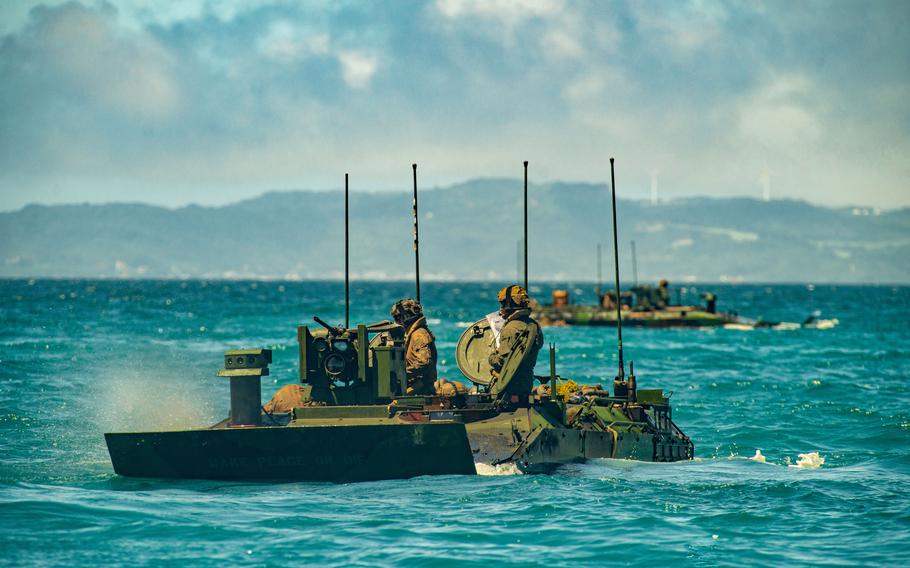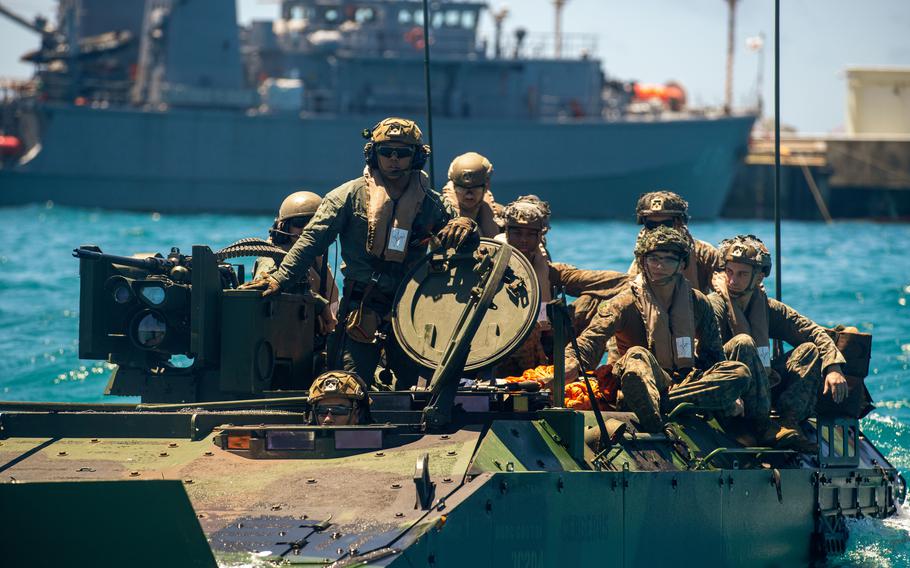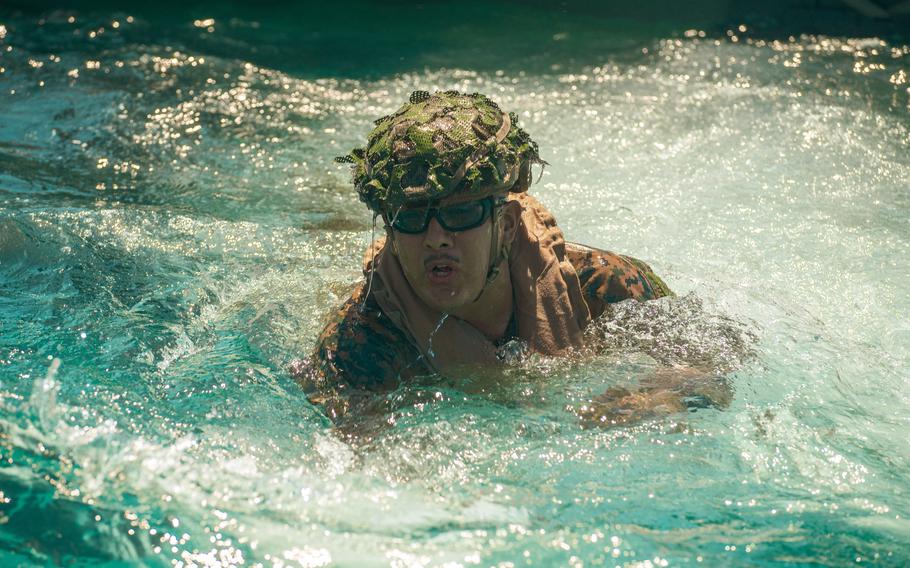
Marine Corps Amphibious Combat Vehicles of the 15th Marine Expeditionary Unit were waterborne at White Beach Naval Facility, Okinawa, Japan, June 24, 2024. (Peyton Kahle/U.S. Marine Corps)
The Marine Corps’ new amphibious combat vehicle went to work Tuesday in waters off Okinawa doing for the first time what it was designed to do: moving troops from ship to shore.
Marines and sailors of the 15th Marine Expeditionary Unit reached White Beach Naval Facility, Okinawa, moving part of the way on recently deployed amphibious vehicles, the unit said in a news release Tuesday.
Elements of the unit arrived June 18 at White Beach aboard the amphibious dock landing ship USS Harpers Ferry for a port visit and sustainment training, according to the release.

Marines of the 15th Marine Expeditionary Unit prepare for a troop transfer during an Amphibious Combat Vehicle egress drill at White Beach Naval Facility, Okinawa, Japan, June 24, 2024. (Peyton Kahle/U.S. Marine Corps)
During the ship-to-shore operation, personnel boarded the vehicles before they emerged from the Harpers Ferry well deck. Boats of the 3rd Expeditionary Operations Training Group pulled alongside the amphibious vehicles to transfer those personnel to a pier, simulating safety egress procedures, the statement said.
“This was fairly standard training for us, but I’m proud it also represented the first overseas ship-to-shore employment of ACVs,” Marine Lt. Col. Nick Freeman, commander of Marines of Battalion Landing Team 1/5 involved in the movement, said in the release. “We’ll continue to train at other locations in the months ahead, using a deliberate approach, capturing useful data and lessons learned, and ultimately sharpening our understanding of how to best employ the ACV in its intended environment.”

Lance Cpl. Angel Morales-Gregorio, of Arizona, a mortarman with Alpha Company, Battalion Landing Team 1/5, 15th Marine Expeditionary Unit, swims during an Amphibious Combat Vehicle egress drill at White Beach Naval Facility, Okinawa, Japan, June 24, 2024. (Peyton Kahle/U.S. Marine Corps)
The ACV replaced the Corps’ amphibious assault vehicles after the accidental deaths of nine Marines off the Southern California coast in July 2020. BAE Systems of York, Pa., developed the ACV under a $67 million contract in June 2019. The following year, the company received a $184 million contract for the vehicle’s full production.
A Marine with 15th MEU died in a training accident in December when an ACV rolled over at Camp Pendleton, Calif.
The new vehicles’ first operational deployment took place in May in the Philippines during the Balikatan exercise. During those drills, the 15th MEU launched its amphibious vehicles for live-fire exercises at a waterborne range in Oyster Bay, on the island of Palawan.
Ahead of the ship-to-shore movement on Okinawa, Marines showed off the ACVs on the Harpers Ferry to other Marine units and members of the Japan Self-Defense Force, according to the release.
The 15th MEU is under the command of Task Force 76, the expeditionary warfare arm of the U.S. 7th Fleet headquartered at Yokosuka Naval Base, Japan.
“It was incredible to see the ACVs in operation, as they truly are a force multiplier in this area of operations.” U.S. Navy Rear Adm. Chris Stone, commander of Task Force 76 and Expeditionary Strike Group 7, said in the release.